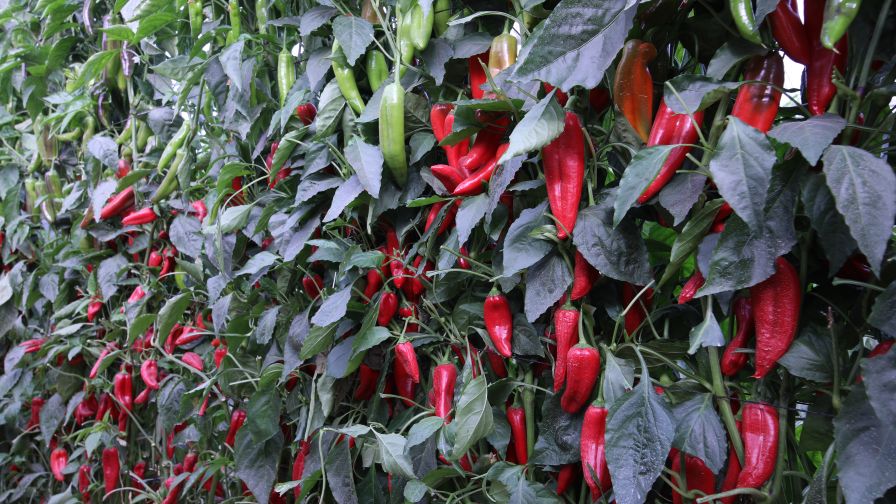A Closer Look at the Development of Seedless Sweet Peppers
 About 20 years ago, when a select range of European and American fresh vegetable suppliers and retailers were asked what was the next summit to be conquered in the area of fresh vegetables, the responses were varied and interesting. For tomato, although already with an excess of segments on the shelf, the demand for a consistent improved and special taste was frequently repeated. Cucumbers with a much higher dry matter percentage than normal would greatly help that emerging fresh-ut sector. Melons with an edible peel was another popular answer, as well as a sweet pepper with no seeds at all — not less seeds, not even one seed, but fruit that could be relied upon to be 100 % seed-free.
About 20 years ago, when a select range of European and American fresh vegetable suppliers and retailers were asked what was the next summit to be conquered in the area of fresh vegetables, the responses were varied and interesting. For tomato, although already with an excess of segments on the shelf, the demand for a consistent improved and special taste was frequently repeated. Cucumbers with a much higher dry matter percentage than normal would greatly help that emerging fresh-ut sector. Melons with an edible peel was another popular answer, as well as a sweet pepper with no seeds at all — not less seeds, not even one seed, but fruit that could be relied upon to be 100 % seed-free.
Zeraim Gedera, then one of Israel’s leading seed companies, was one of the first in the seed sector to develop a vertically-integrated approach, addressing the needs of producers and fresh-produce chain partners through to consumers who are constantly looking for innovative, differentiated, healthy, sustainable, and cost-effective products. The Zeraim pepper breeder, Benny Nir, became involved. The breeding program was on a small scale, commonly called, in the profession, “Friday afternoon breeding”. No genetic modification or fancy tricks – just a classic breeding approach together with Nir’s excellent eye.
The seedless plant combined male sterility in the pepper plant with an excellent level of parthenocarpy (defined as a natural fruit-setting without fertilization). The innovation was to develop excellent parthenocarpy, producing marketable fruits all up the plant. In other words, the end result of sweet, crunchy, seedless fruit was achieved not by genetic manipulation, but rather by intelligent selection. At this first stage, without seeds in the fruit, vegetative propagation was essential.
In 2007, Syngenta acquired Zeraim Gedera, building a feasible business model for this highly innovative product. Branded by Syngenta under the name of Angello, the seedless mini-pepper won the Innovation Award at Fruit Logistica in 2012 and reached some supermarket shelves in the United Kingdom and the Netherlands.
 Varietal breeding continued, and Benny Nir moved to the stage of producing seeds that would provide plants with seedless fruits. Breedx, established in Israel in 2017 and with the license from Syngenta, hired Benny Nir to continue the seedless pepper program. The focus of Breedx is on conventional breeding of specialized vegetables, and the company has developed a highly innovative breeding program for the taste traits of tomatoes with unique shapes. Breedx has recently entered the field of melon breeding, but sweet, tasty, seedless pepper is still the leading and most advanced of Breedx activities.
Varietal breeding continued, and Benny Nir moved to the stage of producing seeds that would provide plants with seedless fruits. Breedx, established in Israel in 2017 and with the license from Syngenta, hired Benny Nir to continue the seedless pepper program. The focus of Breedx is on conventional breeding of specialized vegetables, and the company has developed a highly innovative breeding program for the taste traits of tomatoes with unique shapes. Breedx has recently entered the field of melon breeding, but sweet, tasty, seedless pepper is still the leading and most advanced of Breedx activities.
Today, Breedx seedless sweet mini pepper varieties are sold under the Pepperito brand and focus on two snack segments – 1Bite with a length of up to six cms. and a mini-Kapia type of a fruit length between 8 and 15 cms. Additional snack segments are at an advanced breeding stage and will become commercial soon.
The seedless pepper has to be grown in isolation in a protected structure (net or plastic or glass). When grown in a greenhouse in which there is also a standard (seeded) pepper crop, the seedless rows are isolated from the non-seedless area by a thick net or plastic hanging partition.
Today, there are three varieties that can be reproduced by seeds, two for red mini kapia and one for red 1Bite.The other varieties, presently grown by vegetative propagation, are on the way to seeds. While red is the dominant color, there are also yellow and orange varieties in the portfolio. As Lior Carmeli, Breedx CEO says, “Our aim is to have the complete color range for commercial production in each segment over the next two to three years from seeds.” Today, Breedx seedless peppers are commercially grown in Spain for European markets, in Mexico and Canada for North American markets, and in both South Africa and Israel for local markets, with ongoing trials in other markets.









